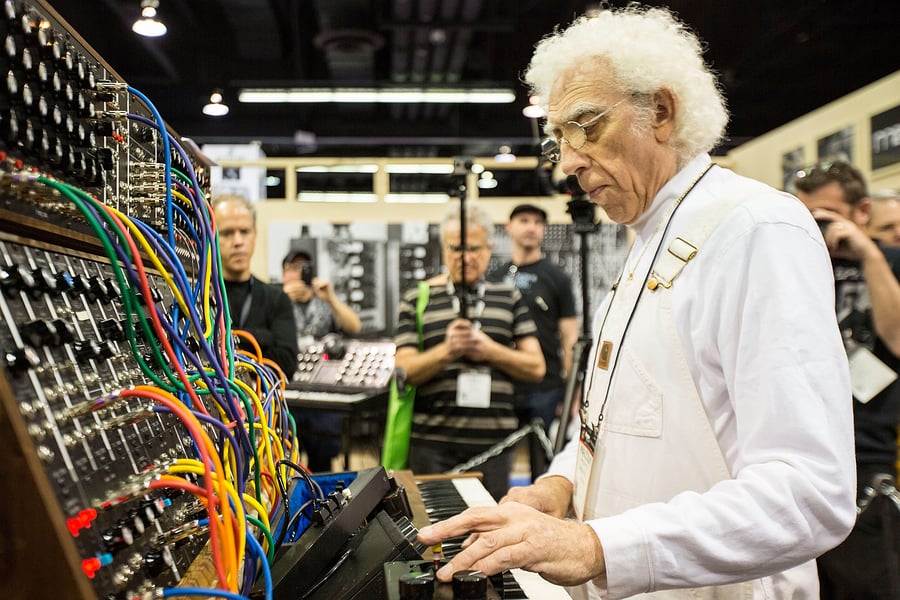Malcolm Cecil, producer of several classic Stevie Wonder albums and co-designer of the world’s largest analog synth, known as TONTO, died Sunday, March 28th. He was 84.
The Bob Moog Foundation confirmed Cecil’s death, saying his son, Milton, had informed the organization of the news. An official cause of death was not given, though the foundation’s statement said Cecil died “after a long illness.”
It is with the heaviest of hearts that we share the passing of the legendary creative genius, musician, engineer, producer, & synthesizer pioneer, Malcolm Cecil, show here w his creation TONTO. He passed away today at 1:17am after a long illness. #malcolmcecil #TONTO #moog pic.twitter.com/yYqcmuf5AV
— Bob Moog Foundation (@TaoPdX) March 28, 2021
Cecil was born in London, served as a radar technician in the Royal Air Force and began his musical career as a jazz bassist in the 1950s. In the late Sixties, having relocated to the United States, he was introduced to synthesizers after meeting Bob Margouleff, who’d purchased one of the first Moog Series IIIc models to finish a film score.
Cecil and Margouleff became partners, adding an array of synthesizers to their collection, tinkering with and arranging the modules into a futuristic, six-foot tall semi-circle of knobs and wires. They named their creation TONTO — The Original New Timbral Orchestra — and formed Tonto’s Expanding Head Band, which released an album, Zero Time, in 1971.
Love Music?
Get your daily dose of everything happening in Australian/New Zealand music and globally.
Cecil’s key innovation with TONTO was combining synths from Moog and ARP with an array of custom modules from a Russian composer and Jimi Hendrix’s guitar tech. The result was an electronic orchestra, the possibilities of which drew Wonder to the instrument in the early Seventies. Between 1972 and 1974, Wonder would work with Cecil, Margouleff and TONTO to create four classic albums: Music of My Mind, Talking Book, Innervisions and Fulfillingness’ First Finale.
TONTO’s original home was Electric Lady Studios in New York, but in 1973 it was relocated to the Record Plant in Los Angeles, where the Isley Brothers, the Doobie Brothers and Randy Newman all used it. By the mid-Seventies, however, Wonder’s relationship with Cecil and Margouleff fell apart, both because of a conflict over royalties (no official contract was ever signed between the three) and Wonder’s changing musical interests. After TONTO’s tumultuous — and only — live performance on the TV show Midnight Special in 1975, Cecil and Margouleff parted ways as well, with the former buying out the latter’s share in their creation.
Over the next several decades, TONTO would be used by an array of artists including Minnie Riperton, Joan Baez, Quincy Jones, Bobby Womack, Weather Report, Gil Scott-Heron, Harry Nilsson, James Taylor, Diana Ross and Little Feet. Devo’s Mark Mothersbaugh was also a devotee, even housing Tonto in his Mutato Muzika studio for a time, and using it on his famous soundtrack for the classic kids cartoon, Rugrats.
Revolutionary as TONTO was, however, it was inevitably outpaced by newer, easier-to-use synthesizers. Cecil spent several years looking for a proper home for the instrument, eventually selling it to Calgary’s National Music Centre; it’s now housed there in the “living collection,” which boasts instruments and other equipment that are fully operational and can be used by contemporary artists.
From Rolling Stone US



































